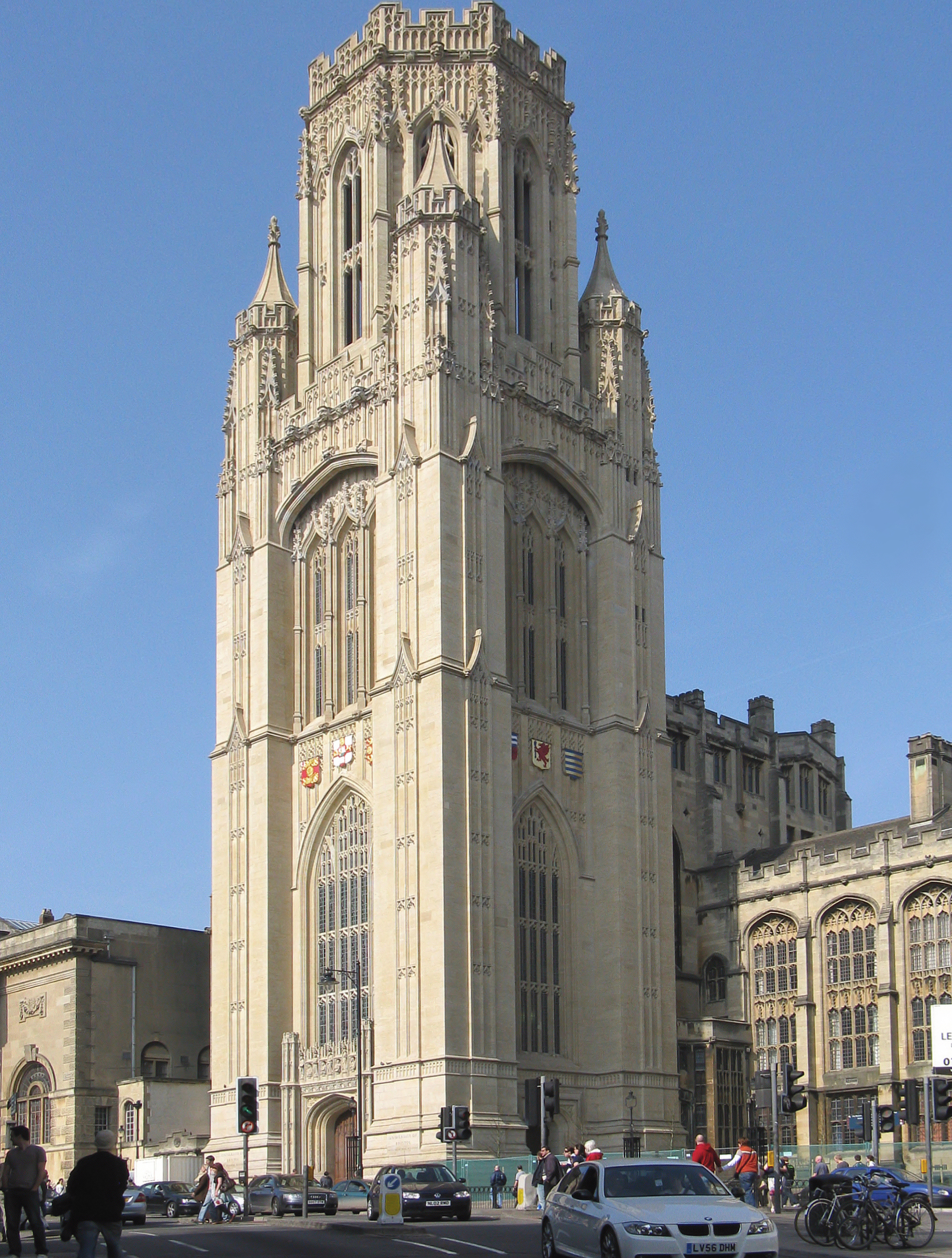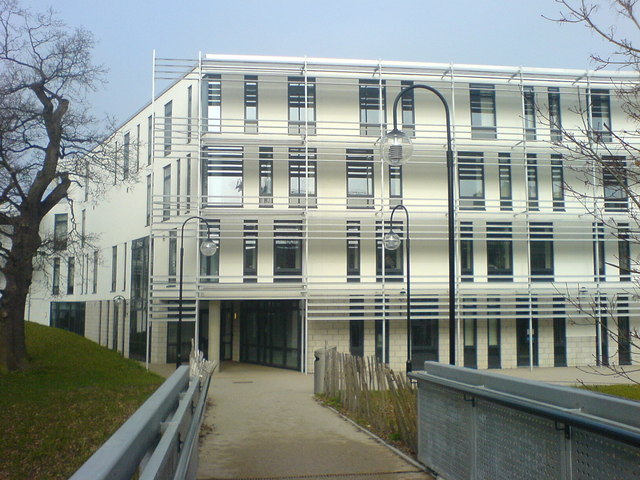|
Simple Knowledge Organisation System
Simple Knowledge Organization System (SKOS) is a W3C recommendation designed for representation of thesauri, classification schemes, taxonomies, subject-heading systems, or any other type of structured controlled vocabulary. SKOS is part of the Semantic Web family of standards built upon RDF and RDFS, and its main objective is to enable easy publication and use of such vocabularies as linked data. History DESIRE II project (1997–2000) The most direct ancestor to SKOS was the RDF Thesaurus work undertaken in the second phase of the EU DESIRE project . Motivated by the need to improve the user interface and usability of multi-service browsing and searching, a basic RDF vocabulary for Thesauri was produced. As noted later in the SWAD-Europe workplan, the DESIRE work was adopted and further developed in the SOSIG and LIMBER projects. A version of the DESIRE/SOSIG implementation was described in W3C's QL'98 workshop, motivating early work on RDF rule and query languages: ... [...More Info...] [...Related Items...] OR: [Wikipedia] [Google] [Baidu] |
W3C Recommendation
The World Wide Web Consortium (W3C) is the main international standards organization for the World Wide Web. Founded in 1994 and led by Tim Berners-Lee, the consortium is made up of member organizations that maintain full-time staff working together in the development of standards for the World Wide Web. , W3C had 459 members. W3C also engages in education and outreach, develops software and serves as an open forum for discussion about the Web. History The World Wide Web Consortium (W3C) was founded in 1994 by Tim Berners-Lee after he left the European Organization for Nuclear Research ( CERN) in October 1994. It was founded at the Massachusetts Institute of Technology (MIT) Laboratory for Computer Science with support from the European Commission, and the Defense Advanced Research Projects Agency, which had pioneered the ARPANET, one of the predecessors to the Internet. It was located in Technology Square until 2004, when it moved, with the MIT Computer Science and Artif ... [...More Info...] [...Related Items...] OR: [Wikipedia] [Google] [Baidu] |
Linked Data
In computing, linked data (often capitalized as Linked Data) is structured data which is interlinked with other data so it becomes more useful through semantic queries. It builds upon standard Web technologies such as HTTP, RDF and URIs, but rather than using them to serve web pages only for human readers, it extends them to share information in a way that can be read automatically by computers. Part of the vision of linked data is for the Internet to become a global database. Tim Berners-Lee, director of the World Wide Web Consortium (W3C), coined the term in a 2006 design note about the Semantic Web project. Linked data may also be open data, in which case it is usually described as Linked Open Data. Principles In his 2006 "Linked Data" note, Tim Berners-Lee outlined four principles of linked data, paraphrased along the following lines: #Uniform Resource Identifiers (URIs) should be used to name and identify individual things. #HTTP URIs should be used to allow these thin ... [...More Info...] [...Related Items...] OR: [Wikipedia] [Google] [Baidu] |
Unicode
Unicode, formally The Unicode Standard,The formal version reference is is an information technology standard for the consistent encoding, representation, and handling of text expressed in most of the world's writing systems. The standard, which is maintained by the Unicode Consortium, defines as of the current version (15.0) 149,186 characters covering 161 modern and historic scripts, as well as symbols, emoji (including in colors), and non-visual control and formatting codes. Unicode's success at unifying character sets has led to its widespread and predominant use in the internationalization and localization of computer software. The standard has been implemented in many recent technologies, including modern operating systems, XML, and most modern programming languages. The Unicode character repertoire is synchronized with Universal Coded Character Set, ISO/IEC 10646, each being code-for-code identical with the other. ''The Unicode Standard'', however, includes more th ... [...More Info...] [...Related Items...] OR: [Wikipedia] [Google] [Baidu] |
Hierarchy
A hierarchy (from Greek: , from , 'president of sacred rites') is an arrangement of items (objects, names, values, categories, etc.) that are represented as being "above", "below", or "at the same level as" one another. Hierarchy is an important concept in a wide variety of fields, such as architecture, philosophy, design, mathematics, computer science, organizational theory, systems theory, systematic biology, and the social sciences (especially political philosophy). A hierarchy can link entities either directly or indirectly, and either vertically or diagonally. The only direct links in a hierarchy, insofar as they are hierarchical, are to one's immediate superior or to one of one's subordinates, although a system that is largely hierarchical can also incorporate alternative hierarchies. Hierarchical links can extend "vertically" upwards or downwards via multiple links in the same direction, following a path. All parts of the hierarchy that are not linked vertically to on ... [...More Info...] [...Related Items...] OR: [Wikipedia] [Google] [Baidu] |
Synonym
A synonym is a word, morpheme, or phrase that means exactly or nearly the same as another word, morpheme, or phrase in a given language. For example, in the English language, the words ''begin'', ''start'', ''commence'', and ''initiate'' are all synonyms of one another: they are ''synonymous''. The standard test for synonymy is substitution: one form can be replaced by another in a sentence without changing its meaning. Words are considered synonymous in only one particular sense: for example, ''long'' and ''extended'' in the context ''long time'' or ''extended time'' are synonymous, but ''long'' cannot be used in the phrase ''extended family''. Synonyms with exactly the same meaning share a seme or denotational sememe, whereas those with inexactly similar meanings share a broader denotational or connotational sememe and thus overlap within a semantic field. The former are sometimes called cognitive synonyms and the latter, near-synonyms, plesionyms or poecilonyms. Lexicogr ... [...More Info...] [...Related Items...] OR: [Wikipedia] [Google] [Baidu] |
Index Term
In information retrieval, an index term (also known as subject term, subject heading, descriptor, or keyword) is a term that captures the essence of the topic of a document. Index terms make up a controlled vocabulary for use in bibliographic records. They are an integral part of bibliographic control, which is the function by which libraries collect, organize and disseminate documents. They are used as keywords to retrieve documents in an information system, for instance, a catalog or a search engine. A popular form of keywords on the web are tags, which are directly visible and can be assigned by non-experts. Index terms can consist of a word, phrase, or alphanumerical term. They are created by analyzing the document either manually with subject indexing or automatically with automatic indexing or more sophisticated methods of keyword extraction. Index terms can either come from a controlled vocabulary or be freely assigned. Keywords are stored in a search index. Common wo ... [...More Info...] [...Related Items...] OR: [Wikipedia] [Google] [Baidu] |
Web Resource
A web resource is any identifiable resource (digital, physical, or abstract) present on or connected to the World Wide Web. by Resources are identified using s (URI).RFC 1738 Uniform Resource Locators (URL) In the Semantic Web, web resources and their semantic properties are described using the |
Folksonomy
Folksonomy is a classification system in which end users apply public tags to online items, typically to make those items easier for themselves or others to find later. Over time, this can give rise to a classification system based on those tags and how often they are applied or searched for, in contrast to a taxonomic classification designed by the owners of the content and specified when it is published. This practice is also known as collaborative tagging, social classification, social indexing, and social tagging. Folksonomy was originally "the result of personal free tagging of information ..for one's own retrieval", but online sharing and interaction expanded it into collaborative forms. ''Social tagging'' is the application of tags in an open online environment where the tags of other users are available to others. ''Collaborative tagging'' (also known as group tagging) is tagging performed by a group of users. This type of folksonomy is commonly used in cooperative and ... [...More Info...] [...Related Items...] OR: [Wikipedia] [Google] [Baidu] |
HP Labs
HP Labs is the exploratory and advanced research group for HP Inc. HP Labs' headquarters is in Palo Alto, California and the group has research and development facilities in Bristol, UK. The development of programmable desktop calculators, inkjet printing, and 3D graphics are credited to HP Labs researchers. HP Labs was established on March 3, 1966, by founders Bill Hewlett and David Packard, seeking to create an organization not bound by day-to-day business concerns. The labs have downsized dramatically; in August 2007, HP executives drastically diminished the number of projects, down from 150 to 30. As of 2018, HP Labs has just over 200 researchers, compared to earlier staffing levels of 500 researchers. With the Hewlett Packard Enterprise being spun off from Hewlett-Packard on November 1, 2015, and renamed to and HP Inc., the research lab also spun off Hewlett Packard Labs to Hewlett Packard Enterprise and HP Labs was kept for HP Inc. History As the Semiconductor Lab's f ... [...More Info...] [...Related Items...] OR: [Wikipedia] [Google] [Baidu] |
Bristol University
The University of Bristol is a Red brick university, red brick Russell Group research university in Bristol, England. It received its royal charter in 1909, although it can trace its roots to a Society of Merchant Venturers, Merchant Venturers' school founded in 1595 and University College, Bristol, which had been in existence since 1876. Bristol is organised into #Academic structure, six academic faculties composed of multiple schools and departments running over 200 undergraduate courses, largely in the Tyndalls Park area of the city. The university had a total income of £752.0 million in 2020–21, of which £169.8 million was from research grants and contracts. It is the largest independent employer in Bristol. Current academics include 21 fellows of the Academy of Medical Sciences, 13 fellows of the British Academy, 13 fellows of the Royal Academy of Engineering and 44 fellows of the Royal Society. Among alumni and faculty, the university counts 9 Nobel laureates. Bristol is ... [...More Info...] [...Related Items...] OR: [Wikipedia] [Google] [Baidu] |
UK Data Archive
The UK Data Archive is a national centre of expertise in data archiving in the United Kingdom (UK). It houses the largest collection of social sciences and population digital data in the UK. It is certified under CoreTrustSeal as a trusted digital repository. It is also certified under the international ISO 27001 standard for information security. Located in Colchester, the UK Data Archive is a specialist department of the University of Essex, co-located with the Institute for Social and Economic Research (ISER). It is primarily funded by the Economic and Social Research Council (ESRC) and the University of Essex. Many of the data services formerly hosted by the UK Data Archive joined the ESRC-funded UK Data Service, established 1 October 2012. The UK Data Archive is listed in the Registry of Research Data Repositories re3data.org. Scope and purpose The UK Data Archive supports social science research and teaching by acquiring, developing and managing data and rela ... [...More Info...] [...Related Items...] OR: [Wikipedia] [Google] [Baidu] |






